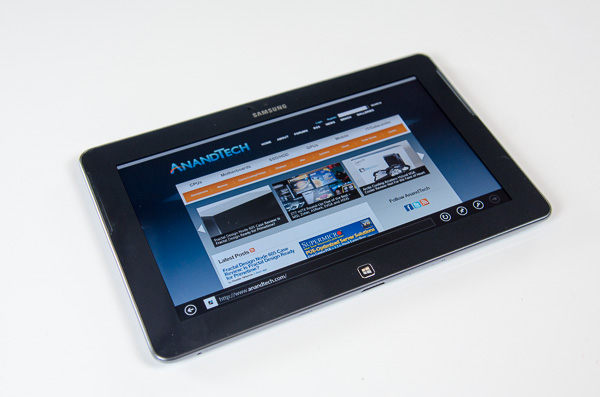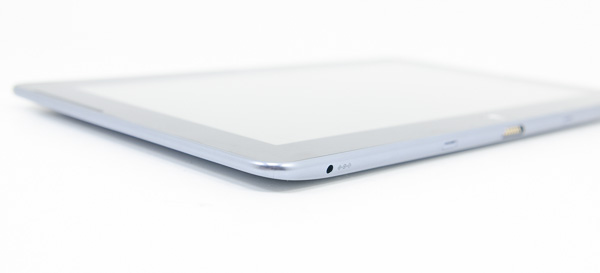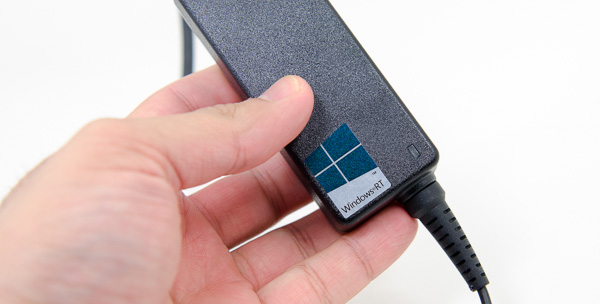Samsung ATIV Tab Review: Qualcomm's First Windows RT Tablet
by Anand Lal Shimpi on January 3, 2013 6:00 AM EST- Posted in
- Tablets
- Samsung
- Qualcomm
- Mobile
- Windows RT
Final Words
With better battery life than Surface RT and better performance as well, I have to say that in the ARM camp Qualcomm's APQ8060A is definitely the preferred SoC for Windows RT today. Qualcomm's single threaded performance advantage is obvious in interacting with the ATIV Tab, particularly for any work on the desktop (modern UI remains fairly smooth across all platforms). Application performance and web browsing performance are at worst equal to NVIDIA's Tegra 3, but at best are tangibly better. Intel continues to have the overall performance advantage (not to mention backwards compatibility), but at times Qualcomm remains surprisingly competitive in many of our tests.
Ultimately even Atom isn't quick enough to fulfill the dream of having a tablet that can really replace a modern notebook, and that's where the Windows RT/8 cookie crumbles for now. I suspect that once we get to the next generation of SoCs we'll see a better story from all of the vendors (22nm Atom, Cortex A15 based Wayne, Krait 200/300 from Qualcomm).
The ATIV Tab itself feels fairly well executed. Its performance is snappy (for Windows RT) and unlike my W510 experience, I didn't encounter much instability during my use of the Tab. Battery life is better than any other Windows RT or 8 tablet we've tested thus far. The Samsung/Qualcomm combination excels in video playback battery life in particular, giving us the first 10-inch tablet capable of lasting as long as a modern iPad in our video playback test. Web browsing battery life is also quite competitive, equaling the Clover Trail based Samsung ATIV Smart PC.
The 10.1-inch form factor and light weight construction make the ATIV Tab a device I wouldn't mind carrying around. Camera quality unfortunately isn't very good overall, particularly in low light situations. Thankfully, unlike most other Windows RT/8 devices we've tested thus far, the ATIV Tab does a great job when it comes to WiFi performance - equaling competitors from Apple and Google. Display quality is competitive with other Windows RT/8 tablets, but it does lag behind the iPad 3/4. If you absolutely need to buy a Windows RT tablet today and value performance more than design/build quality, the ATIV Tab isn't a bad option.
Although I like the ATIV Tab, I still feel like Windows RT/8 and the first generation of tablets need another iteration before they're truly ready for duty. I'd love to see the Surface team's industrial design paired with a faster SoC, a lighter chassis and a more cohesive OS. Windows RT/8 still feel rushed to me (for reasons I've explained before), let's hope that Windows Blue ships on time this year and delivers a more polished and complete experience.













42 Comments
View All Comments
snoozemode - Thursday, January 3, 2013 - link
Lets hope that is the case. But if that is what Blue is, what about current Windows RT devices? And WP8 devices? Will they too be left in the cold as WP7.5 devices? For me it feels like Microsoft has created this massive pile of mess that I'm not sure how long it will take before it's sorted out. I mean my Windows 8 computer still has two separated Internet explorers that doesn't sync favorites between eachother, and this is in year 2013.Silent_Rage - Thursday, January 3, 2013 - link
The current RT and WP8 devices will be upgraded to Blue as well. I'm positive of this since Blue is a smaller form of an update as compared to the usual cycle we've seen with Windows in the past. Windows Blue will be the first "annual" update to Windows and we will see granular changes to Windows RT. On the backend, we will see a shift to align the two OSs (RT and WP8) to share the same APIs, more so than what we're seeing today.ninjacut - Thursday, January 3, 2013 - link
I actually prefer Microsoft approach of not using Phone OS on a tablet, firstly it simply becomes a more productive device and can handle content creation activity better than the Phone OS. Secondly, the way performance is improving in these SOC's the Phone OS will need to catch-up in features. This is already happening with Android doing multi-user and split screen like WRT and will continue to do so. Microsoft has a good advantage at this point.Regarding the 7inch form factor, WRT can perform well but certain features will make less sense such as the desktop. But its again advantage and not a disadvantage.
The challenge is to release WRT 7inch tablet, at the right price asap!
snoozemode - Friday, January 4, 2013 - link
My point is that the WRT UI could stay as it is, the OS would just change UI depending on screen size as Android did in ICS.Regarding desktop in WRT, can't really see the point of having it since you can't run any legacy programs anyway. It's basically there to run Office 2013. Make a Metro UI Office and remove Desktop.
Wolfpup - Thursday, January 3, 2013 - link
This sounds like a dumb question, but do Windows Phone 8 programs also run on Windows 8 and RT? P8 runs P7 stuff, and I've been assuming that RT and real Windows 8 can run Windows Phone 7 and 8 programs too, but not necessarily optimized for the display, iOS style...but I actually have no idea if that's the case.Also...I have no idea if it's even possible to back up metro programs. I'm not a huge fan of iOS, but one of the things it does right is let you back up programs to a PC, so you can manage them and don't have to redownload multiple GB onto a new device, or when you're juggling storage.
Really disapointed Metro isn't open though...otherwise Windows 8 is what I've wanted since before the original iPad-a real PC that has an optional tablet interface...but to be a real PC it has to be OPEN...ironically Android is open (technically), Windows 8 as a desktop OS is open, but metro isn't :(
damianrobertjones - Thursday, January 3, 2013 - link
1080p 'real' resolution on a device like this would feature text so small you wouldn't be able to read. Increase the DPI? Might as well just drop straight to 1366x768.Marketing.
DeciusStrabo - Friday, January 4, 2013 - link
Like Android Windows 8 is able to display Metro-Apps independently from the physical resolution, meaning they always use a logical resolution (which makes them look like Babbies first computer-Apps on my 27" screen, since all elements and letters are huge, not taking advantage of the space offered, simply making everything scale up.However the advantage is of course that this way they can use more pixels to display elements, making them look smoother (what Apple does with Retina, but more flexible as you aren't limited to multiples of their logical resolutions and the weird and resources intense offscreen rendering process).
So 1080p would be great to have on Windows RT/WP8 devices too, as it just means smoother and more readable UI elements, not smaller UI elements (disadvantage on desktops, advantage on mobile devices).
mayankleoboy1 - Thursday, January 3, 2013 - link
It has Adreno225.How about NOOOO
killerclick - Thursday, January 3, 2013 - link
Lol @ 1366x768Lol @ dead platform
Lol @ available storage
It's worth $350 at most (not even that if you don't need Office), although seeing how Metro devices are doing, they should be offering more for less.
BrokenCrayons - Thursday, January 3, 2013 - link
I'm not at all a huge fan of Windows RT devices since I just don't see the value added in limiting one's computing to a keyboard-less device or having to add a keyboard at additional cost to perform data entry at a reasonable speed, but tablets have their place as content consumption and entertainment devices. They're also the current wizbang thing to purchase, replacing other fads like 3D TV and netbooks.All that said, there's really nothing wrong with the screen's resolution given the 10 inch size. Yes, there's lots higher resolution devices available, but to make those devices usable, objects on screen must be scaled to a reasonable size, negating lots of the advantages while costing in battery life and platform performance managing pixels that are simply there to be checkbox specification for marketing.
The platform isn't dead yet. It might go the way of Windows Mobile someday, but it's sort of early to assume such is the case.
The device storage is pretty disappointing. Sure you can add memory via SD or an external devices, but it would be nice to be able to use more of what you're paying for OR for the cost of additional storage to be lower. One of the things that I don't care much for with RT (and 8-based tablets as well) is the large footprint of the OS. It hasn't gotten much worse since 7's launch, but the move from rotating hard disks to flash memory has certainly made getting lots of storage an expensive prospect. Power consumption and durability are nice, but vendors do make you pay if you want to keep much information on the device itself.